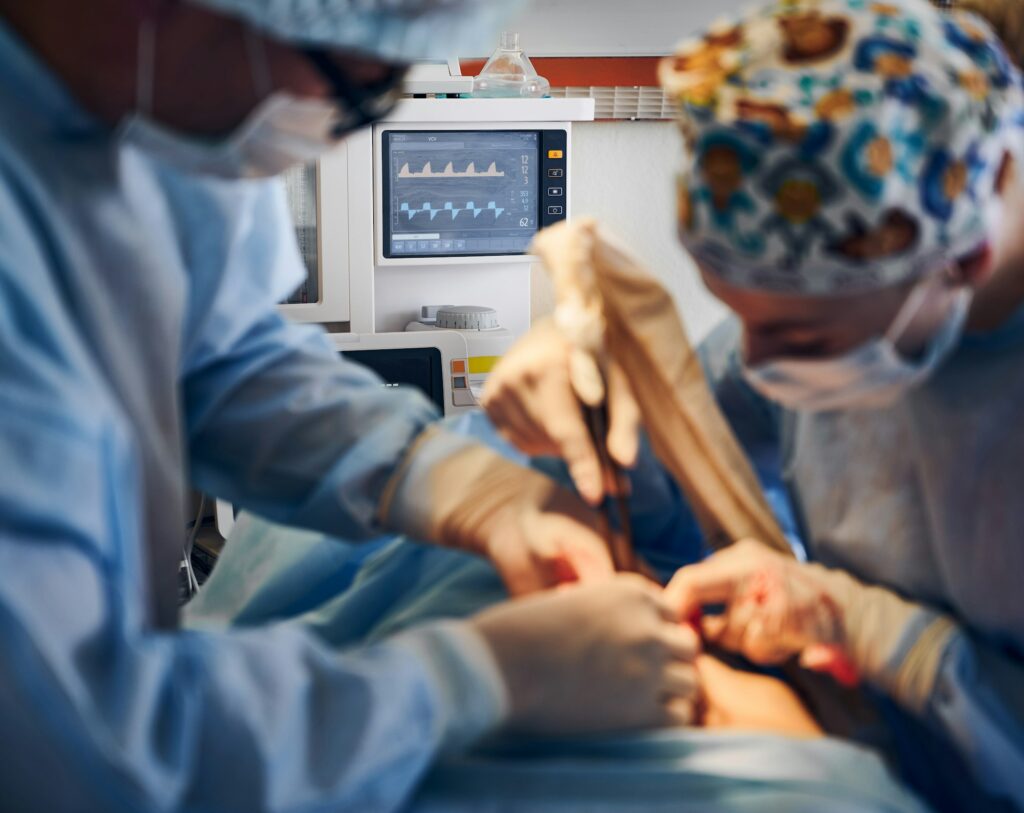You’ve done everything right. You’ve lost the weight, committed to your health, or made it through pregnancy—and yet, no matter how disciplined you are, the loose skin, stretched muscles, or stubborn belly pouch won’t budge.
It’s not a reflection of your effort. It’s just reality. For many people, no amount of core work or clean eating can reverse the deep changes in abdominal skin and muscle that come with weight fluctuations or pregnancy.
That’s where abdominoplasty comes in.
At Stanwix Plastic Surgery, we specialize in helping patients complete that transformation—bringing their physical appearance into alignment with how they actually feel inside. Whether you’re considering a mini or full tummy tuck, or exploring your options after significant weight loss, this guide will walk you through everything you need to know.
We’ll break down the procedure, explain the differences between mini and full abdominoplasty, highlight how it can help post-weight loss patients, and give you a clear picture of what recovery and results really look like—so you can decide if it’s the right next step for your journey.
Table of Contents
ToggleWhat Is Abdominoplasty?
Abdominoplasty is a cosmetic procedure that involves removing excess skin and fat from the abdomen and tightening weakened or separated abdominal muscles. The goal is to restore a smoother, more toned midsection and reinforce the abdominal wall, especially when it has been stretched due to pregnancy, weight fluctuations, or aging.
This surgery is not a weight loss procedure. Instead, it’s a body contouring treatment that fine-tunes your appearance after you’ve lost fat through diet, exercise, or bariatric surgery. It can also resolve issues that diet and exercise alone cannot address, such as sagging skin and separated muscles.
Common reasons for seeking abdominoplasty include:
- Loose, hanging abdominal skin after weight loss or pregnancy
- Stretch marks located on excess skin
- Abdominal muscle separation (diastasis recti)
- Stubborn fat in the lower abdominal region
- Irritation, rashes, or hygiene concerns under excess skin folds
At Stanwix Plastic Surgery, we offer tailored abdominoplasty procedures for patients throughout Richmond, Charlottesville, Williamsburg, and the surrounding areas.
Step-by-Step Breakdown of the Abdominoplasty Procedure
Step 1: Preparing for Surgery
Two weeks before surgery, you’ll be advised to stop taking blood-thinning medications, herbal supplements, or anything else that could increase your risk of bleeding. Smokers will be required to stop smoking several weeks before and after surgery, as nicotine use significantly increases the risk of complications.
Your surgeon will evaluate your health, assess your abdominal structure, and determine whether a full or mini abdominoplasty is appropriate for your goals. You’ll also be advised to maintain a stable weight and arrange for post-operative support at home, as you will need help during the first days of recovery.
Step 2: Day of Surgery – Pre-op and Anesthesia
On the day of surgery, you’ll be checked in and prepped by the nursing staff. Dr. Stanwix will meet with you again to answer any last-minute questions and confirm the surgical plan.

Once you’re taken into the operating room, anesthesia will be administered. Most abdominoplasty procedures are performed under general anesthesia to ensure you are fully asleep and comfortable throughout the surgery. In some cases, local anesthesia with sedation may be used.
Step 3: Making the Incisions
A horizontal incision is made just above the pubic area, strategically placed to be hidden by underwear or swimsuit bottoms. For a full abdominoplasty, an additional incision is made around the navel to allow for repositioning.
Step 4: Repairing Abdominal Muscles
Dr. Stanwix will carefully separate the skin from the underlying muscles, allowing access to the abdominal wall. If muscle separation is present (diastasis recti), the muscles will be sutured back together, providing a tighter core and slimmer waistline.
Step 5: Removing Excess Skin and Fat
The skin is gently pulled downward, and any extra tissue is trimmed away. If needed, liposuction may be used to remove small pockets of fat and enhance the final contour. The belly button is repositioned to a natural location on the newly tightened skin in full abdominoplasty cases.

Step 6: Closing the Incisions
Once the desired shape is achieved, the incisions are closed with sutures, skin adhesives, or surgical tape. Small drainage tubes may be inserted temporarily to prevent fluid buildup and reduce swelling during early recovery.
Mini vs. Full Abdominoplasty: Understanding the Differences
What Is a Mini Abdominoplasty?
A mini abdominoplasty, or mini tummy tuck, is a less invasive option designed for individuals with minimal excess skin and good upper abdominal tone. This procedure focuses on the area below the belly button and does not involve repositioning the navel.
The incision for a mini tummy tuck is smaller and typically placed along the bikini line. The surgeon tightens the lower abdominal muscles and removes localized excess skin. Mini abdominoplasty does not address skin laxity or muscle separation above the navel, making it ideal for patients with limited concerns isolated to the lower abdomen.
What Is a Full Abdominoplasty?
A full abdominoplasty treats the entire abdominal region—both above and below the belly button. This comprehensive approach is ideal for patients with extensive skin laxity, moderate to severe abdominal wall separation, and fat deposits throughout the abdomen.
During a full tummy tuck, Dr. Stanwix makes two incisions: one along the bikini line and another around the navel. The abdominal muscles are repaired from the sternum to the pubic bone, and the skin is pulled taut, improving both the upper and lower abdomen. The belly button is repositioned, and liposuction may be used to enhance the final shape.
Key Differences Between Mini and Full Abdominoplasty
| Feature | Mini Abdominoplasty | Full Abdominoplasty |
| Incision Size | Smaller, along the bikini line | Larger, includes incision around navel |
| Muscle Repair | Lower abdomen only | Upper and lower abdomen |
| Belly Button Adjustment | Not repositioned | Repositioned |
| Focus Area | Below the belly button | Entire abdominal region |
| Best Candidates | Minimal skin laxity, good upper tone | Moderate to severe laxity and diastasis |
| Recovery Time | Shorter | Slightly longer |
How Abdominoplasty Complements Post-Weight Loss Transformation
Losing weight is a significant achievement, but for many individuals, especially those who have lost 50 pounds or more, loose skin around the abdomen becomes a frustrating reminder of their former size. Abdominoplasty is often the final stage in a total body transformation after massive weight loss.

What Abdominoplasty Does After Weight Loss
- Removes Loose Skin: The procedure eliminates the hanging folds of skin that remain after fat loss.
- Tightens Muscles: Restores core integrity by correcting abdominal muscle separation, often stretched during weight gain.
- Improves Contour: Reshapes the midsection for a more defined, proportionate silhouette.
- Enhances Comfort: Eliminates skin chafing, rashes, and hygiene challenges common with overhanging skin.
Ideal Candidates for Post-Weight Loss Abdominoplasty
You may be a good candidate for abdominoplasty after weight loss if:
- Your weight has been stable for 6–12 months
- You are at or near your goal weight
- You have realistic expectations
- You’re in good overall health and do not smoke
- You have significant skin laxity and/or diastasis recti
Patients are often advised to wait at least a year after bariatric surgery or weight loss to allow their skin and overall health to stabilize before surgery.
Recovery After Abdominoplasty
What to Expect Immediately After Surgery
Recovery timelines can vary depending on the extent of your procedure, but in general, here’s what you can expect:
- Compression garments will be applied to minimize swelling and support your abdomen as it heals.
- Drainage tubes may be placed temporarily to remove excess fluid.
- Discomfort, swelling, and tightness are common but manageable with prescribed medications.
Timeline Breakdown
Week 1–2:
- Rest and limited movement are crucial.
- Walk lightly around the house to improve circulation.
- Sleep in a slightly bent position to avoid straining incisions.
Week 3–4:
- Return to non-strenuous activities.
- Swelling will continue to decrease.
- Sutures or drains (if not absorbable) may be removed.
Week 5–6 and Beyond:
- Resume light exercise with clearance.
- Scars begin to fade.
- Final results start to become visible over the next 2–3 months.
Long-Term Benefits of a Tummy Tuck
In addition to aesthetic enhancement, abdominoplasty offers numerous long-term benefits:
- Improved posture due to core muscle support
- Relief from skin irritation caused by excess folds
- Better fit and feel in clothing
- Greater ease of movement during exercise
- Increased confidence and body image satisfaction
When paired with a healthy lifestyle, the results of abdominoplasty can last for many years.

Frequently Asked Questions (FAQ)
How long does it take to see the final results of abdominoplasty?
Most patients begin to see significant results within 4 to 6 weeks, but final results can take 3 to 6 months as swelling continues to subside and tissues settle.
Will I have visible scars after a tummy tuck?
Yes, but they are placed low on the abdomen to be hidden by underwear or swimsuits. Scars will fade over time and may be minimized further with scar care treatments.
Can I combine abdominoplasty with other procedures?
Yes, many patients combine tummy tucks with liposuction, breast surgery, or a complete mommy makeover. Dr. Stanwix can discuss safe combination options during your consultation.
Is abdominoplasty covered by insurance?
Typically, tummy tucks are considered cosmetic and not covered by insurance. However, if skin rashes or infections occur due to excess skin, partial coverage may be considered. Check with your provider.
Is there an age limit for getting a tummy tuck?
There is no strict age limit. Candidacy depends more on your overall health, skin condition, and surgical goals than your age.
Choosing a Skilled Abdominoplasty Surgeon
Selecting the right surgeon is key to a successful result. Dr. Matthew G. Stanwix is a board-certified plastic surgeon with extensive experience performing complex body contouring procedures, including abdominoplasty, mini tummy tucks, and post-weight loss transformations.
At Stanwix Plastic Surgery, patients receive a fully personalized approach, advanced surgical techniques, and a commitment to natural-looking, long-lasting results.
Serving Richmond, Charlottesville, Williamsburg, and Surrounding Areas
Stanwix Plastic Surgery proudly serves patients throughout central Virginia. Whether you’re local to Richmond or traveling from Charlottesville or Williamsburg, our team is dedicated to making your journey smooth, supportive, and rewarding.
Schedule Your Consultation
If you’re ready to eliminate excess skin, tighten your abdominal muscles, and restore a firmer, more youthful midsection, abdominoplasty could be the right choice for you.
Call 804-724-7244 today to schedule your private consultation with Dr. Stanwix. Let’s create a personalized plan that fits your goals and transforms your confidence.

